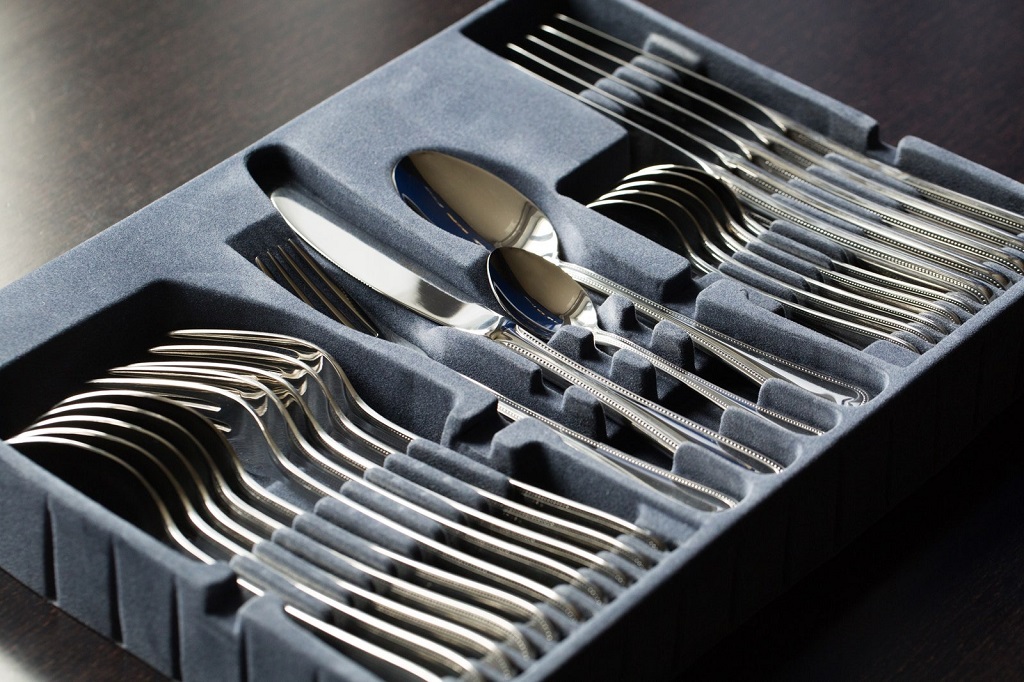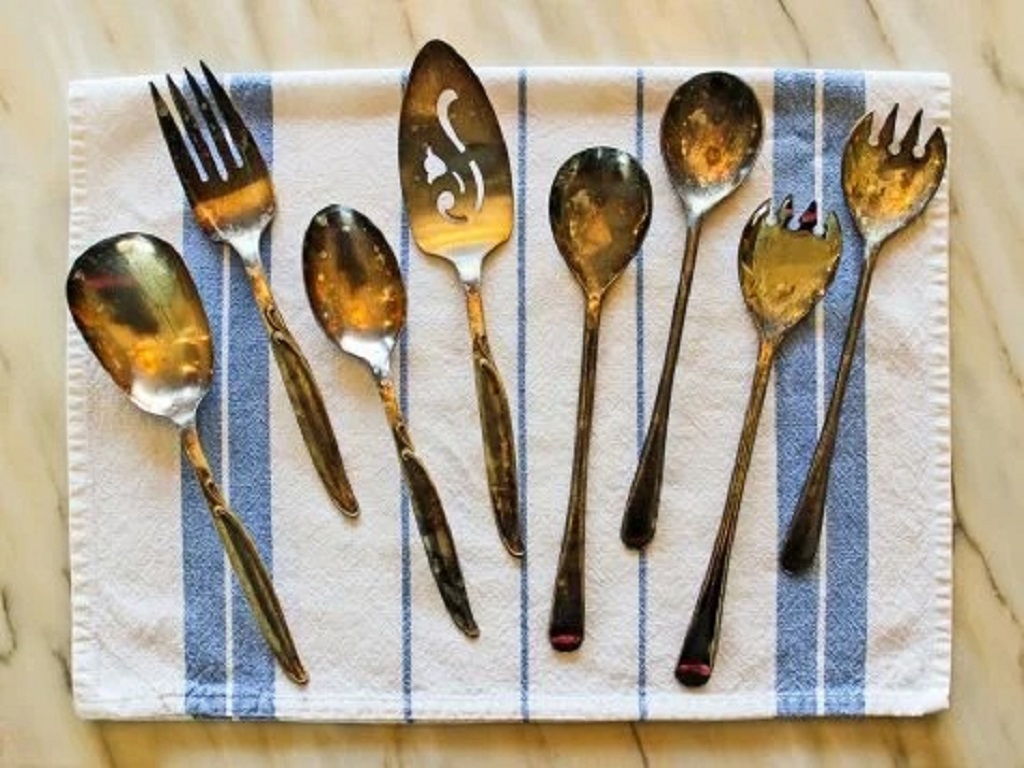Silver-plated cutlery adds a touch of elegance to dining, making it a popular choice for special occasions and family heirlooms. However, unlike stainless steel, silver plating requires a bit more care to maintain its beauty. Over time, silver can tarnish and lose its luster due to exposure to air, moisture, and certain foods. This guide will help you understand how to clean silver-plated cutlery effectively, keeping it in pristine condition for years to come.
Understanding Silver Tarnish: Why Does Silver-Plated Cutlery Tarnish?
Before diving into the cleaning methods, it’s helpful to understand why silver-plated cutlery tarnishes in the first place. Tarnish is a natural process that occurs when silver reacts with sulfur compounds in the air or certain foods, forming a layer of silver sulfide on the surface. This tarnish gives silver a dull or darkened appearance and, if left untreated, can lead to corrosion. Frequent use and exposure to acidic or sulfur-rich foods, such as eggs or mustard, can accelerate this process.
Read More Also: Your Car Needs A Ceramic Coating in Huntsville AL Now
Preparation: What You’ll Need for Cleaning Silver-Plated Cutlery
Before you begin cleaning, gather the following materials:
- Soft microfiber or cotton cloth for polishing
- Mild dish soap to remove dirt and oils
- Baking soda and aluminum foil for a natural tarnish-removing solution
- White vinegar as an optional booster for tougher stains
- Silver polish specifically designed for silver-plated items (optional)
- Warm water and a soft brush for delicate cleaning
Important Note
Avoid abrasive materials, such as scouring pads or harsh chemicals, as they can scratch the silver plating. Only use products that are gentle and non-abrasive to protect the cutlery’s finish.
Step-By-Step Guide: How to Clean Silver-Plated Cutlery
Step 1: Washing with Mild Dish Soap and Water
Start with a simple wash to remove surface dirt and grime:
- Fill a basin with warm water and add a few drops of mild dish soap.
- Gently submerge the cutlery, allowing it to soak for a few minutes.
- Use a soft cloth or sponge to wipe down each piece, focusing on removing any fingerprints, food residue, or oils.
- Rinse each item with clean water to ensure no soap residue is left.
This initial wash is an essential first step, as it prevents dirt from scratching the silver when you move to the next cleaning methods.
Step 2: The Baking Soda and Aluminum Foil Method
This is a popular, gentle way to remove tarnish from silver-plated cutlery without harsh chemicals. The reaction between baking soda, aluminum foil, and warm water reverses the tarnishing process, making it ideal for regular maintenance.
- Line a basin or sink with aluminum foil, shiny side up.
- Add a few tablespoons of baking soda (about one tablespoon per cup of water) to the basin.
- Carefully pour hot water into the basin, allowing the baking soda to dissolve.
- Place the silver-plated cutlery onto the aluminum foil, making sure each piece is in contact with both the water and foil.
- Let the cutlery sit in this solution for 3-5 minutes, or until the tarnish starts to lift.
- Remove the cutlery and rinse it under warm water, then gently dry with a soft, lint-free cloth.
This process is effective and safe for silver plating, helping restore its shine without wearing away the surface.
Step 3: Using White Vinegar for Stubborn Stains
For cutlery with stubborn tarnish that isn’t lifted by the baking soda method, white vinegar can be a helpful addition:
- Combine equal parts of baking soda and white vinegar to create a paste. Be prepared for a little fizzing as the ingredients react.
- Gently rub the paste onto the tarnished areas using a soft cloth or brush, focusing on the most affected spots.
- Rinse the cutlery thoroughly with warm water to remove any residue.
- Dry and buff with a clean cloth.
White vinegar is mildly acidic, making it effective at dissolving tarnish, but it should be used sparingly to avoid potential damage to the plating.
Extra Care Tips: Long-Term Maintenance for Silver-Plated Cutlery
To keep silver-plated cutlery in beautiful condition, a few regular maintenance practices can prevent tarnish from building up over time.
Polishing Your Silver-Plated Cutlery
Periodic polishing can help maintain the shine of your silver-plated cutlery, but it’s essential to use a polish specifically designed for silver-plated items. Here’s how:
- Apply a small amount of silver polish to a soft cloth.
- Gently rub the polish onto each piece of cutlery in a straight line (circular motions can cause tiny scratches).
- Let the polish sit for a minute, then buff it off with a clean, dry cloth.
- Avoid over-polishing, as too much polishing can wear down the silver plating over time.
Polishing once or twice a year should be sufficient for most silver-plated items, depending on usage and exposure to air and humidity.
Storage Tips to Prevent Tarnish
Proper storage is crucial for preventing tarnish on silver-plated cutlery. Here are some tips:
- Store in a dry, cool place: Moisture accelerates tarnish, so avoid storing silver-plated cutlery in humid areas, like kitchens or bathrooms.
- Use anti-tarnish strips or cloths: Special anti-tarnish strips or cloths can be placed in your storage drawer or cabinet to absorb moisture and sulfur compounds from the air.
- Wrap individual pieces: For extra protection, wrap each piece of cutlery in a soft cloth or acid-free tissue paper. This prevents scratches and minimizes air exposure.
- Avoid rubber bands: Rubber contains sulfur, which can speed up tarnishing. Use only tarnish-resistant materials for securing or storing silver-plated items.
Common Mistakes to Avoid When Cleaning Silver-Plated Cutlery
While cleaning silver-plated cutlery isn’t difficult, a few common mistakes can damage the finish. Here’s what to avoid:
Using Abrasive Cleaners or Scrubbing Pads
Abrasive cleaners, scrubbing pads, or harsh sponges can scratch the silver plating, exposing the underlying metal. Always use a soft cloth, sponge, or brush to avoid accidental damage.
Over-Soaking or Using Very Hot Water
Excessive heat or prolonged soaking in hot water can damage silver plating, especially if the items are antique. Stick to warm, not boiling, water, and avoid leaving cutlery submerged for long periods.
Cleaning in a Dishwasher
While some silver-plated cutlery might technically be labeled dishwasher-safe, dishwashers are generally too harsh for silver-plated items. Dishwasher detergent can be abrasive, and the high temperatures can dull the finish over time. Always hand wash silver-plated cutlery for the best results.
Conclusion: Keeping Your Silver-Plated Cutlery Beautiful for Years
With proper care and regular cleaning, silver-plated cutlery can remain a stunning addition to your dining table. Using gentle, effective cleaning methods, such as the baking soda and aluminum foil method or a vinegar solution, will remove tarnish while preserving the silver plating. Routine polishing and thoughtful storage practices will keep tarnish at bay and prolong the life of your cutlery. By following these steps, you can enjoy the timeless elegance of silver-plated cutlery for generations.





